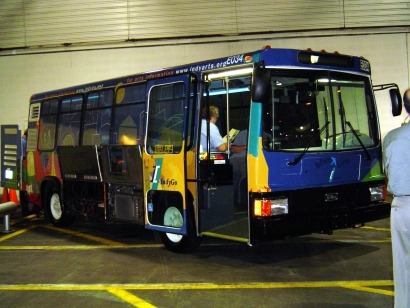
The buses are full size, low-floor models for the city’s regular route network. They will operate using MHI’s high-performance ‘MLiX’ lithium-ion rechargeable batteries and a lighter body incorporating a partial adoption of carbon fibre construction. The new buses will be able to operate continuously over dramatically increased distances offering a quiet and comfortable ride with zero gas emissions.
Kitakyushu City’s plans call for the new vehicles to enter service in late March. In October, renewable energy generated by solar power will be stored in an energy storage system for use in recharging thereby ensuring a zero emissions transportation system.
A specially developed charger will enable the buses to be fully recharged in approximately half the required time, compared with current CHAdeMO type quick charging systems. The buses will be able to travel up to 80 kilometres on full charge at a top speed of 85 kilometres per hour.
The MLiX lithium-ion rechargeable battery to be featured on the new electric buses is lightweight, compact in size with a high level of reliability and long service life. The battery has already achieved a significant track record through its widespread adoption in cargo container-type energy storage systems, hybrid forklifts and other advanced products developed and marketed by MHI.
A number of demonstration tests of electric buses have been conducted in various locations around Japan and also overseas, including Sao Paulo, Brazil, in order to contribute to the creation of efficient, low-carbon city environments. MHI is now positioning itself to take advantage of increased demand.
For additional information:

